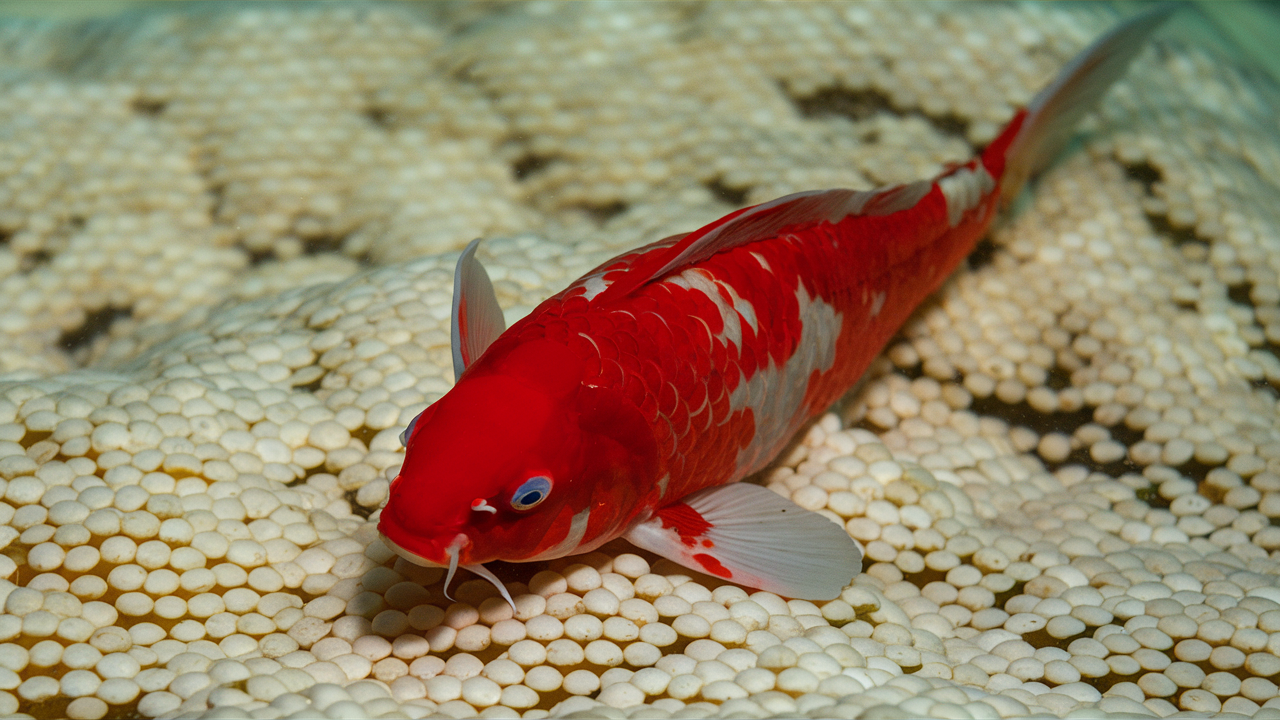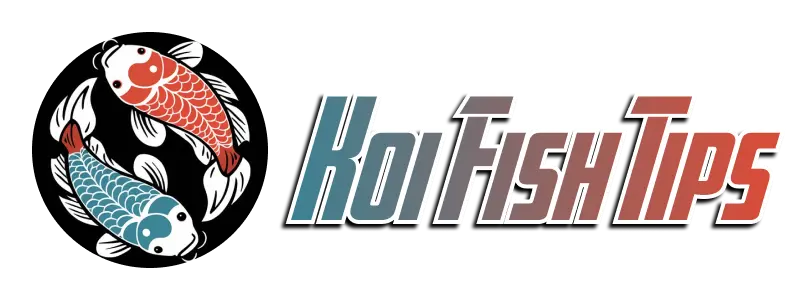Koi fish, with their vibrant colors and graceful movements, are a captivating sight in any water garden. For dedicated koi enthusiasts, witnessing the cycle of life unfold in their ponds, from spawning to hatching, is a truly rewarding experience. What do koi fish eggs look like? This guide will, Koi Fish Tips delve into the fascinating world of koi reproduction, revealing the secrets of koi eggs and how to recognize and care for them.
Unveiling the Mystery: What Do Koi Fish Eggs Look Like?
Koi eggs, also known as spawn, are a testament to nature’s intricate design. They are small, delicate, and often hidden in the nooks and crannies of a koi pond.
Size and Shape: A Tiny Treasure
Koi eggs are typically tiny, measuring just a few millimeters in diameter. They are round or slightly oval in shape and resemble tiny pearls or beads.
Color: A Spectrum of Shades
The color of koi eggs can vary depending on the species and the stage of development. They can range from pale yellow or white to a more pronounced orange or reddish hue.
Texture: A Delicate Touch
Koi eggs have a soft, gelatinous texture that is similar to caviar. They are sticky and adhere to surfaces like plants, rocks, or even the bottom of the pond.
Recognizing Koi Eggs: A Journey of Discovery
Identifying koi eggs in your pond is like finding hidden treasures. Here’s what to look for:
- Location: Koi eggs are often found in protected areas of the pond, such as under plants, in the shade of rocks, or in the crevices of pond ornaments.
- Clusters: Koi eggs are typically laid in clusters or groups, making them easier to spot.
- Appearance: Look for tiny, round or oval objects that are sticky and translucent and have a pale yellow or orange color.
The Importance of Proper Care for Koi Eggs: A Journey to New Life
Once you’ve discovered koi eggs in your pond, it’s crucial to provide them with the right conditions for successful hatching.
- Water Quality: Maintain clean, clear water with optimal water parameters (temperature, pH, ammonia, nitrite, and nitrate levels).
- Protection: Ensure the eggs are protected from predators like birds, fish, and other aquatic creatures.
- Temperature: Koi eggs need a consistent temperature for optimal development. Ideal temperatures range from 68°F to 77°F (20°C to 25°C).

How long does it take for koi eggs to hatch?
The incubation period for koi eggs can range from 5 to 14 days, depending on the water temperature.
- Warmer water temperatures generally result in faster hatching times.
- Cooler water temperatures can extend the incubation period.
Here’s a general guideline:
- 72°F (22°C): 7-10 days
- 77°F (25°C): 5-7 days
- 68°F (20°C): 10-14 days
It’s important to note that these are just estimates, and the actual hatching time can vary depending on other factors, such as the specific species of koi, the overall water quality, and the health of the eggs.
How can I protect koi eggs from predators?
Protecting koi eggs from predators is crucial for ensuring their survival and the success of your breeding efforts. Here are some effective methods:
Create a Safe Haven
- Plants: Dense aquatic plants like water lilies, water hyacinths, or water lettuce provide excellent cover for koi eggs. The dense foliage creates a maze-like environment that makes it difficult for predators to access the eggs.
- Rocks and Ornaments: Placing rocks, driftwood, or other pond ornaments in strategic locations can create hiding spots for the eggs. Look for areas with crevices, overhangs, or shaded areas where predators are less likely to venture.
- Floating Nets: A fine-mesh floating net placed over the area where the eggs are located can act as a physical barrier against birds and larger fish. Ensure the net is secured properly to prevent it from being dislodged by wind or water currents.
Reduce Predator Population
- Predator Control: If you have a known predator issue, consider removing or relocating the offending fish. This could include larger koi, catfish, or other predatory species that might target the eggs.
- Netting: A fine-mesh net placed over the entire pond can prevent birds from accessing the eggs. However, this method can restrict sunlight and air circulation, so it’s essential to monitor water quality closely.
Other Strategies
- Nighttime Protection: Some predators, like birds, are less active at night. You can consider covering the pond with a net or tarp during the evening hours to provide additional protection.
- Distraction: Place a decoy or a few fake eggs in a different area of the pond to distract predators from the actual eggs.
- Observation: Keep a close eye on your pond and be vigilant for signs of predation. If you notice
Remember: The best approach is to combine multiple strategies to create a multi-layered defense against predators. By taking these steps, you can significantly increase the chances of your koi eggs hatching successfully and bringing forth a new generation of beautiful koi.
FAQs About Koi Fish Eggs: A Journey of Knowledge
When do koi fish spawn?
Koi fish typically spawn in the spring or early summer when water temperatures are warm enough. The exact timing can vary depending on the climate and the specific species of koi.
What do koi fry look like?
Koi fry are tiny, transparent fish with a small yolk sac attached to their bellies. They are highly vulnerable and need proper care to survive.
How can I tell if koi eggs are fertilized?
Fertilized koi eggs will appear cloudy or opaque and will eventually develop a small, dark eye spot. Unfertilized eggs will remain clear and will not develop.
Conclusion
Understanding the appearance and care of koi fish eggs is a crucial step in the journey of koi breeding. By creating the right environment and providing the necessary protection, you can witness the magic of new life unfold in your pond. Remember, patience and careful observation are key to successful koi breeding.

Bài viết liên quan
How Long Can Koi Fish Live Without Food?
How long can koi fish live without food? As a responsible koi keeper, understanding the [...]
Jul
Koi Fish Behavior: Tips For Keeping Koi Healthy And Beautiful
Koi fish, with their vibrant colors and graceful movements, have captivated aquarists and pond enthusiasts [...]
Jul
Can Koi And Goldfish Live Together? A Comprehensive Guide
Welcome to Koi Fish Tips, your ultimate guide to the captivating world of koi! If [...]
Jul